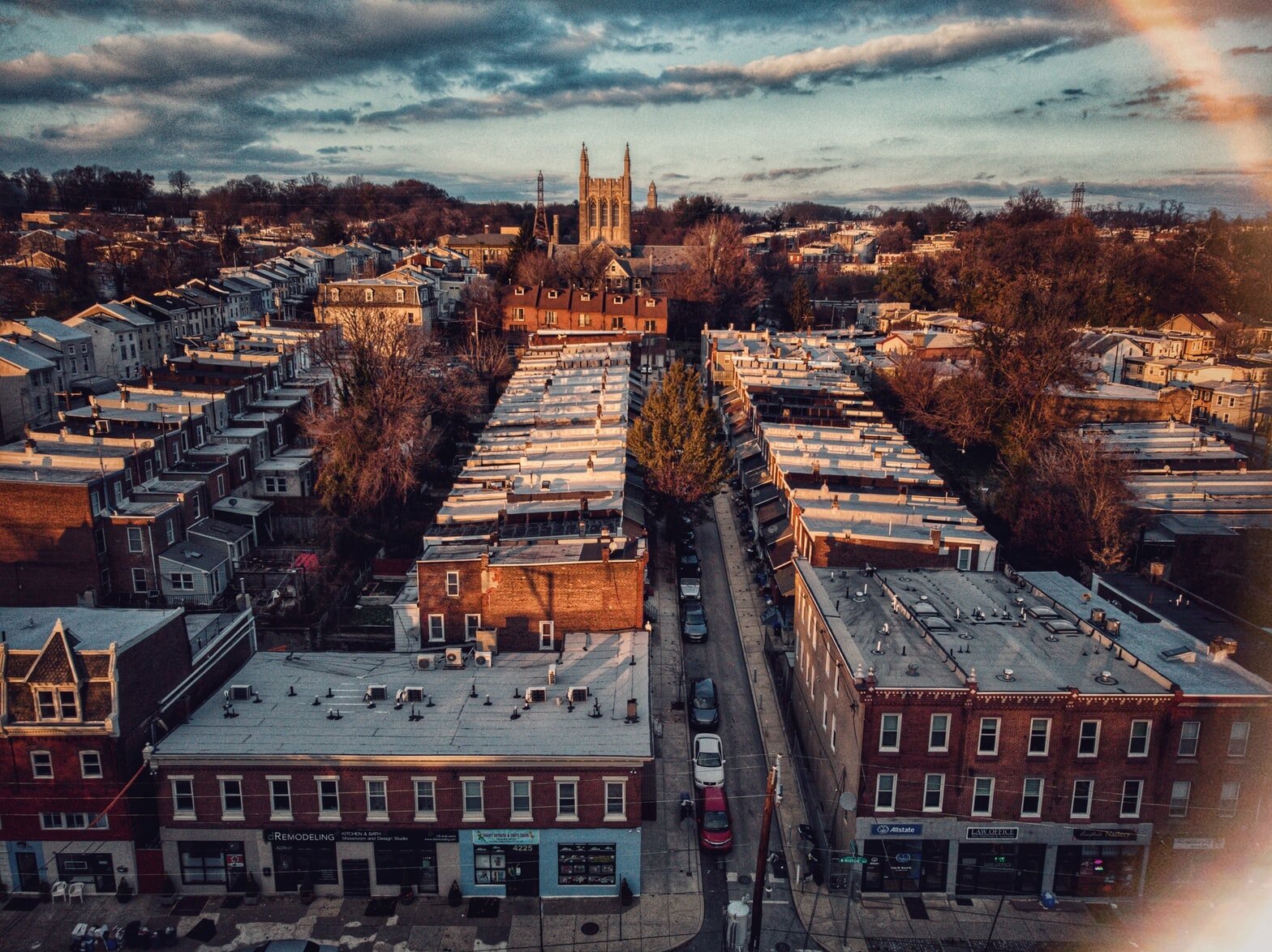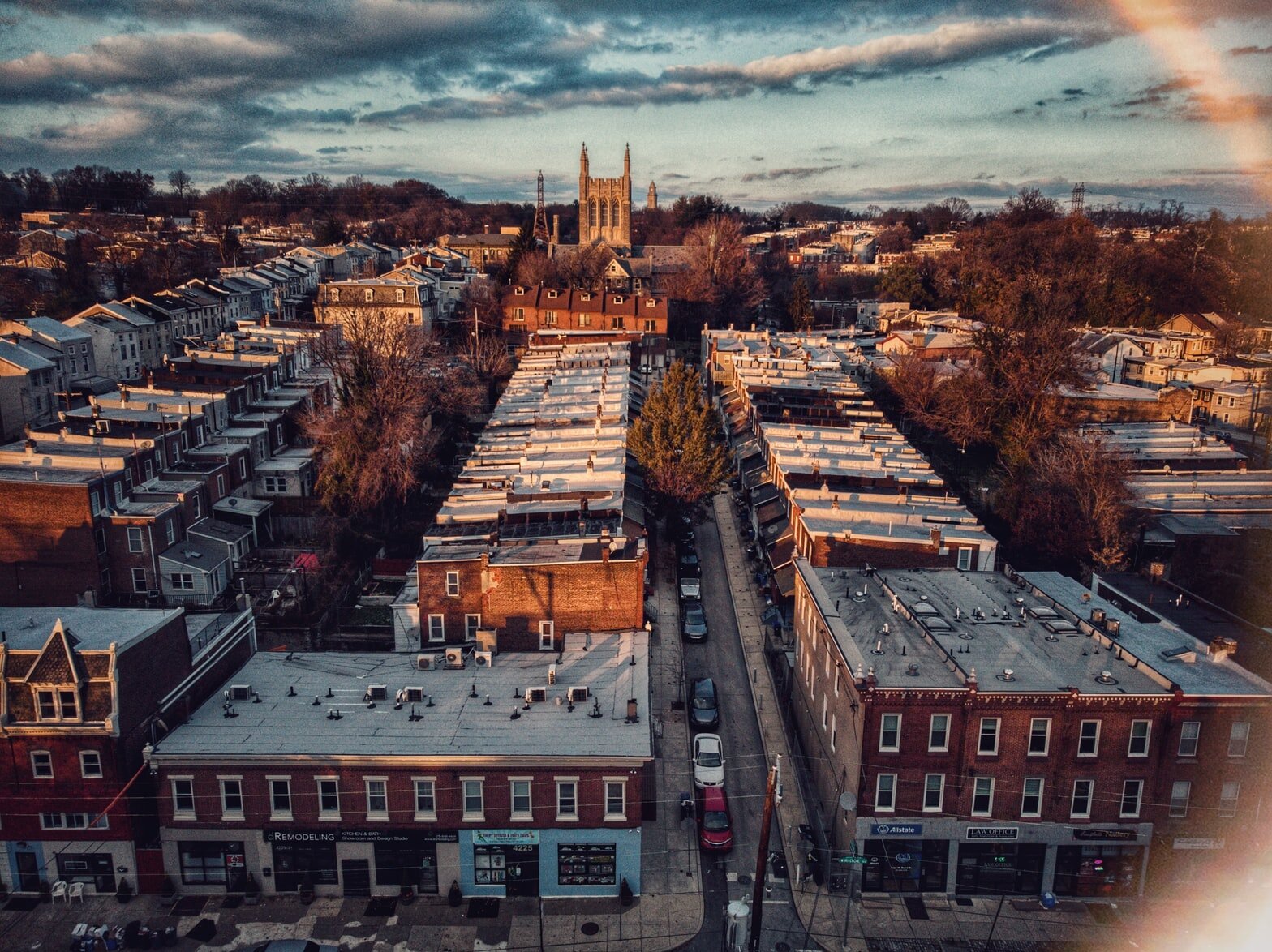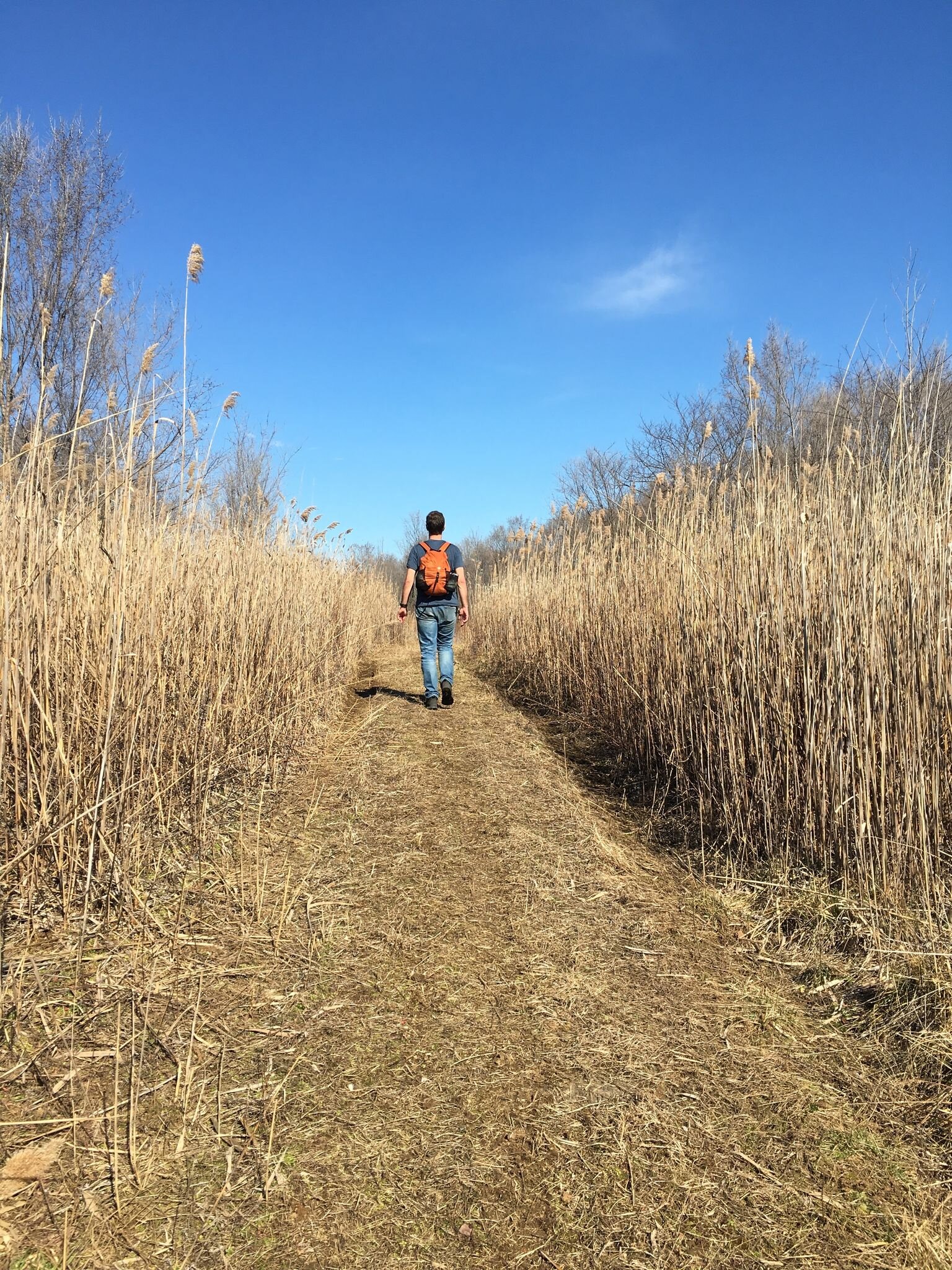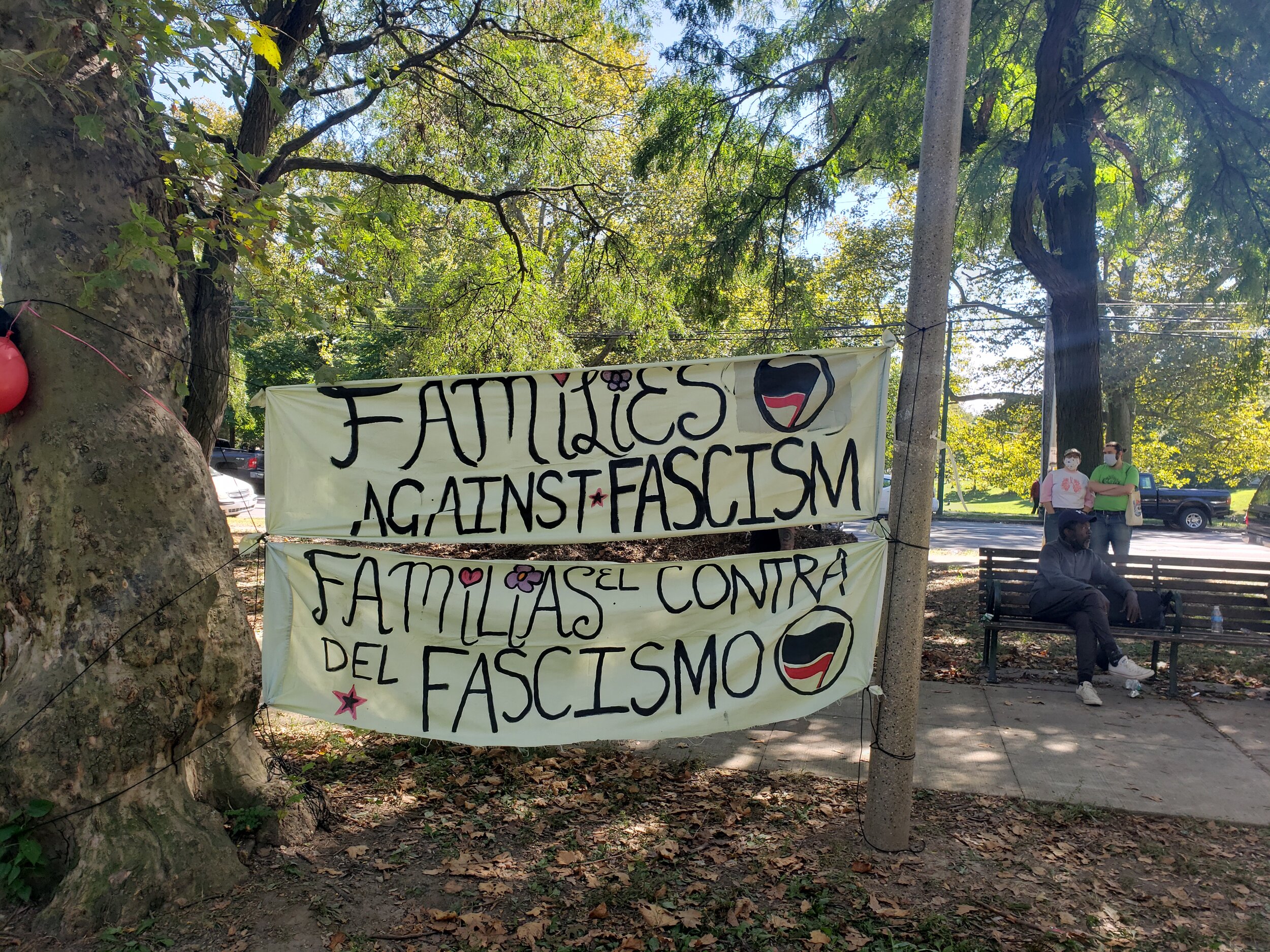Today I walked my children past a city-owned vacant lot where the broken sidewalk is almost impassable and the weeds encroaching on the already narrow path are as tall as they are. We walk by everyday and they complain about how the weeds scratch their legs as they try to get through—and I’m sure they’re not the only ones who do.
Vacant lots have long been a major issue in Philadelphia and have a long and complex history. The general background is that Philadelphia had just over 2 million people at the height of its population in the 1950s. As manufacturing jobs were either automated or operations moved to cheaper labor markets and jobs were lost, Philly’s population declined to just over 1.5 million people by 2000, a 27% decrease.
This job loss led to population loss that left vast swaths of abandoned houses and factories that over time were demolished due to neglect and now represent the vacant lots and buildings we see today. Currently, there are an estimated 40,000 vacant lots and buildings in Philadelphia.
An estimated 30,000 of these properties are owned by private entities. Some are actively being held by owners who are speculating on the right time to sell and other parcels are sought after by professional property hunters who track down family members of the deceased owner, offer to take care of the legal logistics of selling the property and cut the family in on the proceeds of the sales.
When a property is truly abandoned by the owner and the real estate market forces are not enticing enough to sell the property at sheriff sale, the City then assumes ownership. Currently there are an estimated 10,000 properties owned and maintained by the City of Philadelphia.
Before I offer ideas on how vacant lots can be utilized, I must acknowledge the capitalist dissonance between the City’s vacant buildings and the fact that there are people in this city experiencing homelessness. As the protests on the parkway have made clear, the City needs to take action on the protestors demands to invest in Philadelphia’s city-owned vacant housing stock, no matter the condition, to alleviate homelessness.

Take a walk around the City and it’s fairly apparent that maintenance of both public and private vacant lots is extremely lacking—[transition]. Behavioral scientists at the University of Pennsylvania have also conducted behavioral studies around on vacant lots and found that violent gun crime can drop by as much as 29% in areas where vacant lots are cleaned and greened.
If the City viewed vacant lots as more of a community asset and less of a governmental liability, I feel it could contribute to a pandemic recovery that truly addresses Philadelphia’s systemic inequality.
The liability that these lots cause for the City is incredible. During my time at the City, we estimated that the city was spending almost $10 million a year cleaning up illegal dumping, oftentimes on vacant lots.
If you speed up private development too much and alleviate many of the barriers for developers, then gentrifying forces are unleashed on a neighborhood and the people who benefit from these lots are the real estate interests and the wealthy people who can afford the market rate new construction.
The City could alternatively put vacant land into the hands of community members to build wealth and community assets.
We already have the verdant example of community gardens and farms in Philadelphia, as well as the many that are no longer with us. The City is also currently investing in an urban agriculture plan to hopefully create a process to protect the gardens and farms we have and create more in the future. But there are many more examples of how a vacant lot can be activated for and by a community.
Imagine a mural project where the art comes off the wall into a sculpture garden. Or a food truck run by a local entrepreneur that can park on a lot, sets up some tables and has a pop up eatery that can test the market and maybe one day grow into a brick-and-mortar business. Or community members putting down wood chips on a lot and hosting a community flea market once a month.
All of these uses would improve vacant spaces and get eyes on them to prevent illicit activities like illegal dumping—rather than have to rely on the police to do so—and even build the market for future businesses in the community. Why can’t we create a transparent, city-supported program that demystifies the byzantine City bureaucracy and actually has the intended goal of activating mass amounts of lots for the people in Philadelphia’s neighborhoods without having to go through the landbank to assume ownership?
The first issue with promoting community access to vacant land is managing expectations on the length of time a community can use a vacant lot. Although City land holding agencies have yearly agreements for community gardening on public land, gardens take years to cultivate and it’s unreasonable to ask community members to invest in a garden that only exists year to year.
If a community is going to be asked to improve public land, they need a clear understanding of how long the commitment will be in relation with the work and investment that project will take. Hopefully this is something the urban agriculture plan will address when it comes to a long term use like urban agriculture. But if the use is shorter term, how can the community be on the same page with the City and community on what that term of use looks like so an agreement can be reached that works for all parties?
The second issue is with the actual use. As I witnessed while a public servant, the zoning and permitting laws are so confusing that sometimes different agencies overseeing the same process aren’t on the same page with the rules. There is a sign of progress with the newly digitized Licenses and Inspections eClipse system, but it would be a lot of work to adapt this system to excel community permitting on vacant parcels they don’t own.
And the final issue is always with funding and capacity. Yes, some neighborhoods have Business Improvement Districts (BID’s) and Community Development Corporations (CDCs) to support these activities. But what does a community do if that support structure doesn’t exist?
The Zero Waste and Litter Cabinet actually considered these questions when trying to develop a vacant lot activation plan on lots that were experiencing heavy illegal dumping. The idea was to create a checklist of all of the possible activities that could be done on the lot taking into consideration zoning, site conditions/existing amenities and permitting needs. This information would be made public as step-by-step instruction on how to access permits or meet the requirements for the specific use and promoted to community groups to spur ideas or answer questions for existing ideas to improve vacant lots.
The Cabinet also considered the challenge of community funding for projects like this. Although no definitive solution was found, I know that many people inside and outside the city government have advocated for Philadelphia to adopt participatory budgeting where public funding is made available to communities and members of that community can vote on its use. This could be an ideal use of that type of funding.
As I said before, we already have an immediate need to streamline these processes to support the urban ag plan. But with 40,000 vacant lots and the incredible need for community development that the pandemic has revealed, creating more transparent land use situations that address and remove the bureaucratic barriers and help with funding are the types of strategies that in my opinion improve communities by increasing resilience and ownership by the people.
An upfront investment in the staffing and funding for a community based program like the one I described above would cost a fraction of the $10 million the City is currently spending reacting to the problem of illegal dumping as well as exponentially more money in economic activity not to mention the social currency of more vibrant, resilient communities.
And it’s not that crazy. There’s a really good example just across I-76 with the non-profit Grounded Strategies that is doing something very similar with vacant lots in Pittsburgh.
But a program like this will never happen if the City sticks with the trickle down, pro-growth mentality that the way to community improvement is commercial development (whether expensive housing or affluent storefronts).
I would like to advocate for a strategy that builds community resilience and cohesion by providing people from within that community the opportunity to immediately stabilize their neighborhoods and have a little more control over the community wealth that will eventually build as these vacant lots turn into community assets.










